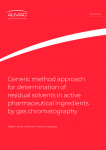Iggesund sees OTC trend key to future growth
over-the-counter products rather than asking their doctors for a
prescription medication, and this promises to benefit companies
involved in pharmaceutical packaging, says Iggesund Paperboard
There is a growing trend towards patients self-medicating with over-the-counter products rather than asking their doctors for a prescription medication, and this promises to benefit companies involved in pharmaceutical packaging.
One company hoping to ride this wave is Sweden's Iggesund Paperboard, which notes that in the space of only a few years, the market for packaging material used in Europe is predicted to have exceeded $5 billion, with growth over the next decade estimated at 60 per cent.
"One important reason is that people are medicating themselves more today, a trend which is partly the forced result of galloping health care costs," according to Guy Mallinson, business director for packaging at Iggesund.
"An increasing proportion of sales are OTC medicines…where the consumer makes the final purchasing decision at the point of sale, he noted, adding that in this scenario the selling points of the packaging become increasingly important.
In terms of value, paper and paperboard make up just over 35 per cent of the packaging materials used for pharmaceutical products, which reflects the importance of the industry to the Swedish company. Deliveries of packaging materials to the pharmaceutical sector are already growing twice as fast as deliveries to other industries, according to Iggesund.
The company believes that there are two clear trends in the market. On one hand, it is important to catch the consumer's eye, and so design features are often very important. But when it comes to prescription medicines - and particularly generic drugs - little emphasis is put on the design aspects of the packaging.
"Pharmaceutical packaging is characterised by a high degree of conservatism," Mallinson said. He acknowledged that part of the reason for this is the demands of regulatory authorities, but said more innovation in packaging could be a good way for the large pharmaceutical companies to distinguish their products from generic competitors.
"If the packaging has functions which make daily life easier for the patient, or if it makes it harder to take an incorrect dosage, or gives better information, then those are added values which should definitely be able to influence sales," he predicted.
He gave as an example an innovative insulin pack from Novo Nordisk holding 10 individually-packed syringes that are compact and easy to handle.
Looking at the factors that influence the development of packaging technologies in the pharma industry, Mallinson noted that printability and surface properties are becoming increasingly important, but the most important competitive issues are runnability and hygiene.















